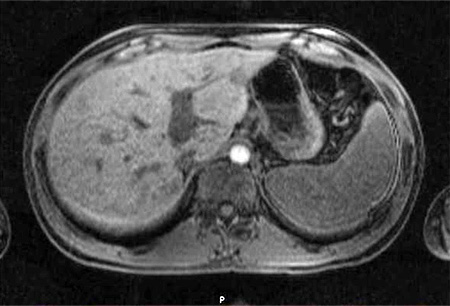Bartonella infection causes severe clinical syndromes in humans. The three most important pathogens responsible for the majority of infections are B henselae, B quintana, and B bacilliformis.
Some species are worldwide in distribution (B henselae), whereas others are geographically localised (B bacilliformis).
Bartonella species are transmitted from an infected natural host to the susceptible human host either by direct contact (cat bite or scratch for B henselae) or via an insect vector (body lice for B quintana, sand fly for B bacilliformis).
Bartonella species infect erythrocytes and cause vascular proliferation, giving rise to prolonged fever, lymphadenopathy, and hepatosplenomegaly.
Laboratory diagnosis is established by culture, serology, or histopathology. Molecular techniques such as polymerase chain reaction are useful for blood and tissue specimens, including heart valves, where available.
Treatment depends on the species of Bartonella and the type of clinical presentation, but usually consists of antibiotic therapy. In some cases (e.g., cat-scratch disease), needle aspiration may be necessary.
Human bartonellosis is caused by Bartonella, a genus of facultative intracellular bacteria. Since 1993, 45 Bartonella species have been identified, some of which have been reported to cause human infections.[1]Jacomo V, Kelly PJ, Raoult D. Natural history of Bartonella infections (an exception to Koch's postulate). Clin Diagn Lab Immunol. 2002 Jan;9(1):8-18.
http://www.ncbi.nlm.nih.gov/pmc/articles/PMC119901
http://www.ncbi.nlm.nih.gov/pubmed/11777823?tool=bestpractice.com
[2]Chomel BB, Boulouis HJ, Maruyama S, et al. Bartonella spp. in pets and effect on human health. Emerg Infect Dis. 2006 Mar;12(3):389-94.
http://www.ncbi.nlm.nih.gov/pmc/articles/PMC3291446
http://www.ncbi.nlm.nih.gov/pubmed/16704774?tool=bestpractice.com
[3]Okaro U, Addisu A, Casanas B, et al. Bartonella species, an emerging cause of blood-culture-negative endocarditis. Clin Microbiol Rev. 2017 Jul;30(3):709-46.
https://cmr.asm.org/content/30/3/709.long
http://www.ncbi.nlm.nih.gov/pubmed/28490579?tool=bestpractice.com
The three most common infections described in humans include: cat-scratch disease (B henselae); Carrion's disease (B bacilliformis), which consists of a bacteraemic phase (Oroya fever) and an eruptive phase (verruga peruana or Peruvian wart); and trench fever (B quintana).[4]Anderson BE, Neuman MA. Bartonella spp. as emerging human pathogens. Clin Microbiol Rev. 1997 Apr;10(2):203-19.
http://cmr.asm.org/cgi/reprint/10/2/203?view=long&pmid=9105751
http://www.ncbi.nlm.nih.gov/pubmed/9105751?tool=bestpractice.com
[5]Maguina C, Gotuzzo E. Bartonellosis. New and old. Infect Dis Clin North Am. 2000 Mar;14(1):1-22;vii.
http://www.ncbi.nlm.nih.gov/pubmed/10738670?tool=bestpractice.com
Bartonella species are responsible for a broad spectrum of clinical syndromes, including prolonged fever of unknown origin, haematological manifestation, encephalitis and encephalopathy, generalised lymphadenopathy, hepatosplenic disease, retinopathy, culture-negative endocarditis, osteomyelitis, arthritis, mediastinal mass, and pleurisy.[4]Anderson BE, Neuman MA. Bartonella spp. as emerging human pathogens. Clin Microbiol Rev. 1997 Apr;10(2):203-19.
http://cmr.asm.org/cgi/reprint/10/2/203?view=long&pmid=9105751
http://www.ncbi.nlm.nih.gov/pubmed/9105751?tool=bestpractice.com
[5]Maguina C, Gotuzzo E. Bartonellosis. New and old. Infect Dis Clin North Am. 2000 Mar;14(1):1-22;vii.
http://www.ncbi.nlm.nih.gov/pubmed/10738670?tool=bestpractice.com
B henselae and B quintana are also known to cause bacillary angiomatosis in people who are immunocompromised.[4]Anderson BE, Neuman MA. Bartonella spp. as emerging human pathogens. Clin Microbiol Rev. 1997 Apr;10(2):203-19.
http://cmr.asm.org/cgi/reprint/10/2/203?view=long&pmid=9105751
http://www.ncbi.nlm.nih.gov/pubmed/9105751?tool=bestpractice.com
[5]Maguina C, Gotuzzo E. Bartonellosis. New and old. Infect Dis Clin North Am. 2000 Mar;14(1):1-22;vii.
http://www.ncbi.nlm.nih.gov/pubmed/10738670?tool=bestpractice.com
Human infections caused by other species of Bartonella (e.g., B vinsonii, B elizabethae, B clarridgeae, B grahamii, B alsatica, B rochalimae, B washoensis, and B koehlerae) do occur but are rare.[5]Maguina C, Gotuzzo E. Bartonellosis. New and old. Infect Dis Clin North Am. 2000 Mar;14(1):1-22;vii.
http://www.ncbi.nlm.nih.gov/pubmed/10738670?tool=bestpractice.com
[6]Brouqui P, Raoult D. Endocarditis due to rare and fastidious bacteria. Clin Microbiol Rev. 2001 Jan;14(1):177-207.
http://cmr.asm.org/cgi/content/full/14/1/177?view=long&pmid=11148009
http://www.ncbi.nlm.nih.gov/pubmed/11148009?tool=bestpractice.com
[7]Daly JS, Worthington MG, Brenner DJ, et al. Rochalimaea elizabethae sp. nov. isolated from a patient with endocarditis. J Clin Microbiol. 1993 Apr;31(4):872-81.
http://jcm.asm.org/cgi/reprint/31/4/872?view=long&pmid=7681847
http://www.ncbi.nlm.nih.gov/pubmed/7681847?tool=bestpractice.com
[8]Roux V, Eykyn SJ, Wyllie S, et al. Bartonella vinsonii subsp. berkhoffii as an agent of afebrile blood culture-negative endocarditis in a human. J Clin Microbiol. 2000 Apr;38(4):1698-700.
http://jcm.asm.org/cgi/content/full/38/4/1698?view=long&pmid=10747175
http://www.ncbi.nlm.nih.gov/pubmed/10747175?tool=bestpractice.com
[9]Avidor B, Graidy M, Efrat G, et al. Bartonella koehlerae, a new cat-associated agent of culture-negative human endocarditis. J Clin Microbiol. 2004 Aug;42(8):3462-8.
http://jcm.asm.org/cgi/content/full/42/8/3462?view=long&pmid=15297484
http://www.ncbi.nlm.nih.gov/pubmed/15297484?tool=bestpractice.com
[10]Rolain JM, Brouqui P, Koehler JE, et al. Recommendations for treatment of human infections caused by Bartonella species. Antimicrob Agents Chemother. 2004 Jun;48(6):1921-33.
http://aac.asm.org/cgi/content/full/48/6/1921?view=long&pmid=15155180
http://www.ncbi.nlm.nih.gov/pubmed/15155180?tool=bestpractice.com
[11]Angelakis E, Lepidi H, Canel A, et al. Human case of Bartonella alsatica lymphadenitis. Emerg Infect Dis. 2008 Dec;14(12):1951-3.
http://www.ncbi.nlm.nih.gov/pmc/articles/PMC2634634
http://www.ncbi.nlm.nih.gov/pubmed/19046532?tool=bestpractice.com
Although predominantly an animal species, B vinsonii subsp. berkhoffii has been noted to cause human disease.[12]Breitschwerdt EB, Maggi RG, Lantos PM, et al. Bartonella vinsonii subsp. berkhoffii and Bartonella henselae bacteremia in a father and daughter with neurological disease. Parasit Vectors. 2010 Apr 8;3(1):29.
http://www.ncbi.nlm.nih.gov/pmc/articles/PMC2859367
http://www.ncbi.nlm.nih.gov/pubmed/20377863?tool=bestpractice.com
Infections caused by B vinsonii subsp. arupensis in humans have been reported in France, Russia, and Nepal causing febrile illnesses, suggesting they are geographically widespread.[13]Bai Y, Kosoy MY, Diaz MH, et al. Bartonella vinsonii subsp. arupensis in humans, Thailand. Emerg Infect Dis. 2012 Jun;18(6):989-91.
http://www.ncbi.nlm.nih.gov/pmc/articles/PMC3358162
http://www.ncbi.nlm.nih.gov/pubmed/22607728?tool=bestpractice.com
This topic focuses mainly on the three most common infections described in humans: cat-scratch disease; Carrion's disease; and trench fever.

